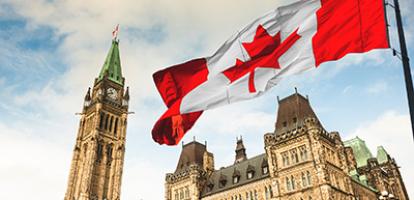Originally published in the Financial Post.
Joe Biden’s appallingly weak performance in the June 27th presidential debate, together with Donald Trump’s defiant survival after Saturday’s assassination attempt, have many American pundits saying November’s election is now Trump’s to lose. If he does return to the White House, U.S. trade relations with friend and foe alike will be in for tough challenges. And nothing will be more exposed than the Canada-US-Mexico Trade Agreement (CUSMA). In fact, CUSMA’s survival could be at risk even without a Republican presidency, given the protectionist bias of the Democratic party.
It isn’t widely appreciated but CUSMA terminates on June 30, 2036. It continues beyond that date only if the three governments agree to extend it for another 16 years. Whether that happens depends on a wide-ranging review of the agreement that starts in a couple of years. The review would face more serious headwinds in a Trump administration than a second Biden term. Trump’s former trade representative, Robert Lighthizer, who is widely expected to have a major role in a second Trump administration, is a die-hard advocate of “America First” trade policy and highly critical of trade agreements generally.
In fact, in the 2017-2018 negotiations that brought CUSMA into being, Lighthizer wanted the agreement to last just five or six years. Canada and Mexico refused, so the result was a bizarre three-country review that starts in 2026. Because of Canada and Mexico’s heavy dependence on continued access to the vast American market, the review gives maximum advantage to the U.S. side.
Technically, the review is to be carried out by the CUSMA Free Trade Commission. But the Commission consists of the three countries’ trade ministers so in reality it’s the three governments exchanging positions among themselves. These exchanges will almost certainly amount to a re-negotiation of the agreement in key areas.
Rumblings out of Washington, even at this early stage, indicate that the Americans will want major changes in the deal, clawing back compromises they made earlier or adding new provisions that work in the U.S. interest.
The first order of business, however, will be how the review takes place. The agreement only provides for it in general terms. A protocol needs to be settled on beforehand to ensure the review doesn’t go off the rails, with all of the commercial uncertainty that could generate. For example, how long does the review last? The agreement says it starts on June 30, 2026, but doesn’t spell out a timeframe. How does the Commission handle the briefs the governments are supposed to submit? What if there’s no agreement in the Commission? If the process doesn’t extend CUSMA, there have to be annual reviews until the deal ends in 2036. How will these annual reviews work? These points might seem technical, but it’s important to establish the procedures before the review starts to make sure it’s well orchestrated. Leaving things to chance in the hope they sort themselves out once the review starts isn’t a good idea.
Administrative matters are important. But what’s crucial are the substantive parts of the deal on the table. The possibility of changes in government in both the U.S. and Canada clouds the picture, but whatever the political situation in 2026, the U.S. position will be the dominant factor. What that is we will know soon enough. U.S. law requires the U.S. Trade Representative to report to Congress by the end of next year on the operation of CUSMA and any areas that need updating.
The details of that report will be important but it’s not hard to anticipate four main areas of U.S. concern: Mexico’s protected energy sector and transhipments of Chinese goods into the U.S., together with Canada’s digital services tax and dairy import restrictions, which are a longstanding source of U.S. irritation. Canada needs to be armed with its own “offensive list,” like protectionist U.S. policies on infrastructure and government procurement plus American refusals to comply with CUSMA panel decisions. But we also need to start thinking about how to address U.S. concerns on these tough issues. Unanimous parliamentary votes that supply management must never be on the table in future trade deals are fine for domestic political consumption but if the U.S. decides there’s no deal without progress on dairy, is our entire trading relationship to be sacrificed in the interest of one sector, however important politically?
In other areas, however, things need not be so contentious. All three countries have a clear interest in modernizing and improving the agreement in the areas of: services, information technology, environmental goods, decarbonization issues, supply chain facilitation, nearshoring policies, critical minerals, improved border and customs clearance procedures, human rights and forced labour and even matters of national security.
Going into the review with this kind of positive menu wouldn’t prevent tough bargaining on irritants, but at least there would be a set of less contentious areas that could bear fruit as events unfold post-2026. A set of three-party initiatives aimed at modernizing trade rules in individual sectors could form the basis for an updated CUSMA down the road.
At the end of the day, no matter what emerges from the review a proper, stable treaty is needed to govern the three-country trading relationship. This should be the ultimate goal of the three governments as they prepare for the review. Whoever is inaugurated next January 20th, persuading our American partners of that necessity needs to be a top priority for us.
In the meantime, Canadian business needs to prepare for potentially tumultuous re-negotiations. The good news is that, thanks to the work of key business groups like the Canadian Chamber of Commerce, the Business Council of Canada and the automotive associations, the private sector is waking from its relative complacency and starting to plan strategies. Much work lies ahead, however.
Lawrence Herman is an international lawyer with Herman & Associates and senior fellow at the C.D. Howe Institute in Toronto.





